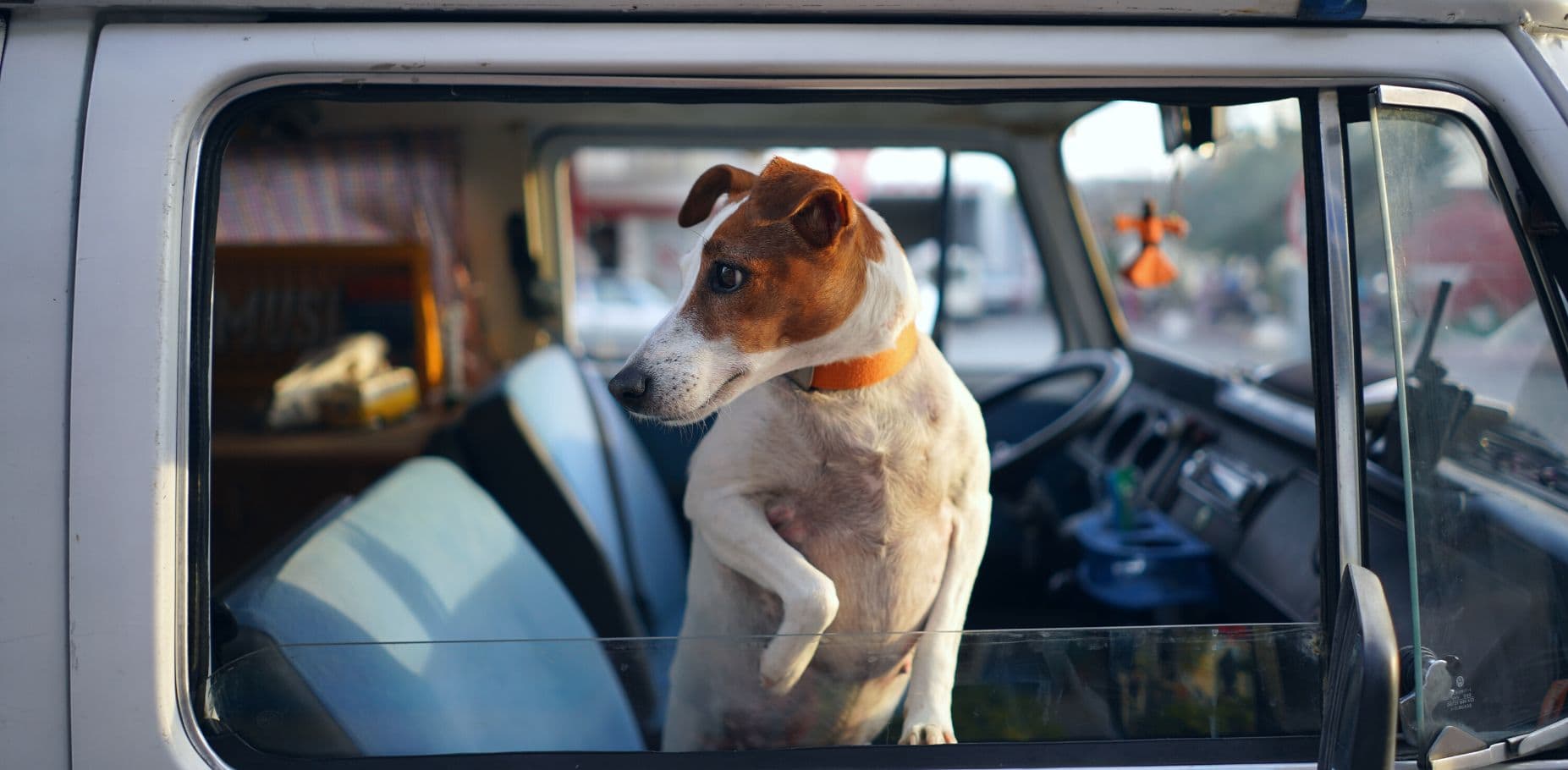Table of Contents
Research Your Local Earthquake Safety Guidelines
An earthquake occurs when two pieces of the earth suddenly slip past one another, releasing energy. These seismic waves manifest as a series of shocks, causing the earth the shake.
Unfortunately, unlike tornadoes or hurricanes, earthquakes cannot be predicted. Thus, the best thing you can do is prepare as much as possible before one occurs.
The risk of earthquakes varies by region. Therefore, it is imperative to research earthquake risk and safety recommendations for your area. Please consult your local guidelines for the most appropriate earthquake preparedness and safety tips.
Prepare Proper Pet Identification
Proper pet identification is essential. For dogs and cats, this includes a collar with ID tags as well as a microchip. For birds, leg bands can be used for identification. These are paramount in the event your pet gets lost or escapes, which is much more likely during an earthquake.
If your pet is not already microchipped, please consult your veterinarian as this is a quick and easy procedure that significantly improves the chances of reuniting with a lost pet. Do not forget to register your pet’s microchip with your current contact information so that you can be reached if you and your pet get separated.
Not all collars are created equal. A poorly fitted collar is more likely to slip off if your pet gets frightened during an earthquake. Please choose a collar that fits well and will not slip off easily. Your pet’s collar should also have ID tags with your contact information attached. In addition to your pet’s name and your phone number, consider attaching an additional medical ID tag if your pet has any serious medical conditions.
Pack an Emergency Kit for Your Pet
Just as you should prepare a disaster emergency kit for you and your family, you need to create one for your pet as well.
Your pet’s emergency kit should include:
- 3 to 7 days of food and water with feeding directions (i.e. amount and frequency); remember to include a manual can opener for canned food
- Bowls for food and water
- Properly labeled medications with administration instructions; remember to include an ice pack for refrigerated medications
- Litter box and litter if applicable
- A copy of your pet’s medical records with proof of vaccination: highlight any significant pre-existing health conditions or behavioral issues
- Equipment needed for safe transportation (e.g. leashes, harnesses, carriers/crates)
- Current photos of your pet for identification purposes in case of separation
- Consider including a bed and toys to keep your pet comfortable and reduce anxiety
- A pet first aid kit (see below)
Create a Pet First Aid Kit
Because of the nature of earthquakes, there is a possibility your pet may get injured from falling debris. Therefore, a pet first aid kit should be part of your emergency earthquake kit.
Please note, if your pet gets injured, it is best to consult your veterinarian as soon as possible. But a first aid kit may be of use until you can seek veterinary care near you.
For example, in the event your pet suffers a wound during an earthquake, supplies such as absorbent gauze pads, alcohol wipes, and over-the-counter antibiotic ointment may be warranted. For a complete list of what your pet first aid kit should contain, refer to ASPCA’s recommendations.
Please keep in mind that at-home treatment with a first aid kit should ideally be approved by your veterinarian beforehand. Additionally, at-home pet first aid should only be attempted in the event that immediate veterinary care is not accessible.
Locate Your Nearest Emergency Veterinarian
Natural disasters aside, all pet owners should familiarize themselves with their nearest emergency veterinary hospital. Having this information prior to a medical emergency saves time, reduces stress for you and your pet, and can be life-saving.
Look up the information for the nearest 24-hour emergency veterinary hospital. Print out the veterinarian’s contact information as well as mapped directions. I recommend looking up a couple of emergency veterinarians in the area so you have options if needed.
This information is crucial especially if your pet gets injured during an earthquake.
Find a Pet-Friendly Shelter or Hotel
Following an earthquake, you and your family may need to move to an emergency shelter.
If you have to evacuate your home, do not leave your pets behind! Remember, if a place is unsafe for you, it is unsafe for your pets. If you absolutely must leave your pets behind, consider using ASPCA’s pet rescue stickers to alert rescue workers.
Please keep in mind that not all emergency shelters are pet-friendly. Consult your veterinarian and local animal shelter for a list of boarding facilities and pet-friendly hotels. Additionally, make a list of friends or relatives that may be able to care for your pet in the event of an emergency.
Keep Your Pet Current on Vaccines
Depending on its severity, an earthquake can create dangerous conditions, increasing the risk of infectious diseases.
To decrease the chance of your pet contracting a disease, it is important to seek regular preventative veterinary care. This will encourage optimal health and protection in the event of greater disease exposure following an earthquake. This includes things like vaccinations and protection against vector-borne diseases (e.g. heartworm, flea, and tick prevention).
Ensure Your Pet is Well-Trained and Socialized
Adequate training and socialization are beneficial in the event your pet gets lost and needs to be rescued by a stranger.
It is important to expose your pet to other people. If you and your pet get separated, emergency workers will have an easier time rescuing your pet if they are well-socialized.
Training may consist of obedience classes as well as evacuation drills. When your family practices evacuation drills, include your pet by getting them comfortable with any equipment needed to transport them. This includes using carriers and leashes, and moving them in and out of the car.
What To Do During an Earthquake
What you should do during an earthquake depends on where you are when the earthquake strikes.
If you are outside (e.g. walking your dog), move into an open area away from anything that might fall onto you and your pet. Drop onto your hands and knees while covering your head and neck with your arm. You may try to hold onto your dog’s leash if possible until the shaking stops. However, you should not compromise your safety if your dog tries to run and hide. If your dog runs away during the earthquake, wait until the shaking has completely stopped before looking for them.
If you are driving with your pet, stop the vehicle carefully in an area away from other cars. Do not stop under anything that may fall, such as trees or power lines. Keep your animal secured (e.g. in their carrier) and remain in the car until the earthquake is over.
If you are indoors when an earthquake hits, get under a table or desk and hold on. Alternatively, crawl next to a wall away from any objects that may fall. If your pet tolerates it, you may carry them with you to shelter. However, many animals will run and hide on their own as soon as the earthquake starts. Do not look for your pet until after the earthquake has completely stopped.
Closely Monitor Your Pet After an Earthquake
Following an earthquake, pets should be carefully monitored for any signs of injury or behavior change.
Once the shaking has stopped, thoroughly evaluate your pet for any injuries from falling debris. If your pet shows any signs of illness or injury, seek veterinary care as soon as possible.
In addition to physical injuries, your pet may suffer from behavioral changes following an earthquake. An earthquake is a traumatic event and may result in anxiety or even aggression. Try your best to keep your pet calm during and after an earthquake. Reducing stimuli by keeping them in a dark, quiet room may be helpful.
It is also important to keep a close eye on your pet to make sure they do not get into any contaminated areas or dangerous debris which are common environmental risks following an earthquake.
Although earthquakes cannot be predicted, you can help increase your pet’s safety by preparing ahead of time. Taking these steps now is important and may even save your pet’s life one day.

Dr. Amanda Takiguchi received her Doctor of Veterinary Medicine degree at Colorado State University. After that, she completed additional training at Texas A&M through a small animal rotating internship. Prior to veterinary school, Dr. Takiguchi studied dance and business management at Columbia University in New York City. She primarily works with dogs and cats but also loves exotic species like rabbits. Her favorite animal that has worked with is the native Hawaiian owl. When she is not promoting animal welfare, Dr. Takiguchi still loves to dance, with training in multiple styles including hip hop, ballet, and tap.








